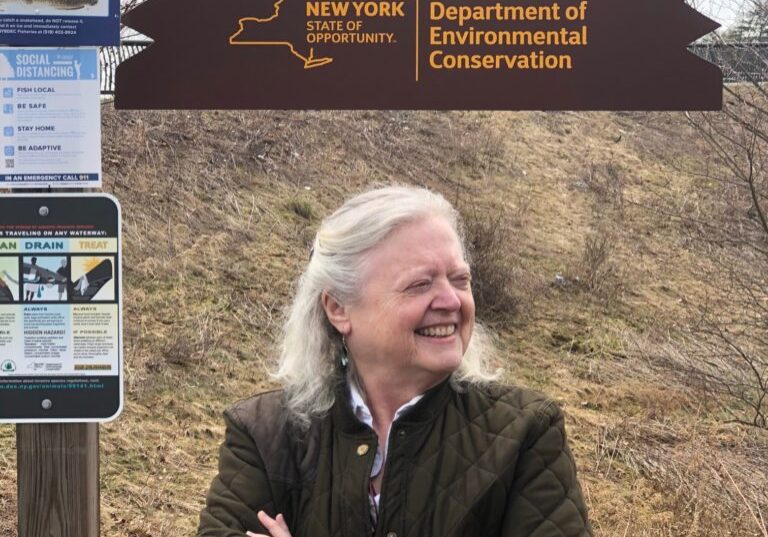
Fireworks are dazzling but come with harmful environmental effects
| July 1, 2024
With the summer months in full swing, the one certainty other than hot days and star-swept nights are fireworks shows to celebrate the Fourth of July.
But as quintessential as they are, researchers have found that fireworks can be harmful to the environment.
Wild animals are left disoriented by the bursts of noise and flashing lights. Dogs are left a trembling wreck. Fireworks debris gets scattered across the land and ends up floating on waterways.
According to an article by chemist Andy Brunning, there are four factors contributing to fireworks pollution: particulate matter, perchlorate pollution, metals and polluting gases.
For humans and wildlife alike, inhaling any of these can have adverse health effects.
Lasting for days after fireworks are set off, particulate matter lingers in the air, high levels of perchlorates can contaminate drinking water, and gases like nitrogen dioxide and sulfur dioxide, as well as tiny metal particles, are dispersed into the air, soil and water.
“Looking at the composition of these particles and which ones may be the most toxic to human health, fireworks are in the mix with particles from coal-fired power plants, which appear to be the worst,” said Terry Gordon, a professor at New York University who studies air pollutants caused by fireworks.
“Based on the fact that fireworks are so high in metal content compared to regular particles that we breathe, I believe they’re extremely toxic,” he said.
A 2020 study that Gordon contributed to found that the particle matter emitted by fireworks can commonly include chlorine, sulfur and potassium. More alarming, trace amounts of lead were found in some firework displays.
“Even though it’s unacceptable, lead snuck through in my studies,” Gordon said. “Ninety to 95 percent of fireworks come from China, so I have a feeling that we don’t know what’s coming into the country — and we’re talking millions of tons of fireworks each year.”
Precautions to curb the impacts
Taking precautions for fireworks shows can make an impact on the spread of debris.
At Lake Wallenpaupack in northeastern Pennsylvania, the Fourth of July fireworks show takes place on the northern banks of the lake at Wallenpaupack Area High School.
The lake feeds into the Lackawaxen River, which snakes through rolling hills and empties into the Delaware River.
Debbie Gillette, the executive director for the Chamber of the Northern Poconos, said the fireworks company that runs the event cleans up after the show.
“Any fallout from the fireworks lands right back down on the softball field where we shoot them from,” she said. “Everything is cleaned up by a crew that night and the field is pristine when we leave. We’ve never had debris go into the lake and if there’s wind, it blows back onto the school property.”
While visible debris is collected from Wallenpaupack’s softball field and the surrounding area, what happens to those particles that can’t be cleaned by hand?
“We inhale a super small fraction of these particles, but the rest are going somewhere — into water and soil,” Gordon said.
In one of his studies, Gordon tested a river for fireworks particles after a show, thinking that the particles would be washed away. Instead, he found that certain metal particles remained prevalent in the water long after the display had ended.
This summer, the Greater New Hope Chamber of Commerce has scheduled four firework shows on the Delaware River — much to the chagrin of some residents.
“I’ve lived around this area all my life and I like New Hope and Lambertville, and I applaud their artistic outreach and the commercial stuff they do,” said Sally Conyne, a resident of Lambertville. “But I just don’t think that in this day and age it’s a very environmentally friendly way to celebrate.”
Trade industry sees it in a different light
Firework trade groups like the National Fireworks Association put the hazards in a different context.
“Fireworks release about 60,000 metric tons of CO2 [per year], which is about the equivalent of the yearly CO2 production of 12,000 cars,” said association spokesman Mark Anderson. “In comparison, the total worldwide emissions of CO2 in 2022 was 37.15 billion metric tons.”
“Consumer fireworks contain items that help them work and display wonderful colors and the ingredients that make up a firework burn up to produce the various effects,” he added. “The smoke created eventually dissipates and the air around the displays return to normal levels. We see this at Fourth of July celebrations and we see it at Disney World and Disneyland.”
Alternatives that are less harmful
To make fireworks safer for our environment, Gordon suggested others can start by following in the footsteps of Disneyland.
In 2004, Disney developed a smokeless launcher to reduce the amount of pollution caused by its daily firework shows. Another option are drone shows, which light the sky just the same but lack the noise and pollution of regular fireworks.
Beyond this, he believes that consumer protection agencies should be doing more to monitor the ingredients of fireworks and that more studies need to be done on how fireworks affect our environment.
“We all love fireworks, but nobody knows how bad it is. That’s it,” he said. “There are almost no studies that have looked at health effects from a pulmonary or cardiovascular point of view, and that’s what we know given that just regular particles in the air are strongly associated with adverse effects.”



![DC_Image [Image 4_Assunpink Meets Delaware] meets Delaware The Assunpink Creek on its its way to meet the Delaware River. The creek passes through woods, industrial and commercial areas and spots both sparkling and filled with litter.](https://delawarecurrents.org/wp-content/uploads/bb-plugin/cache/DC_Image-4_Assunpink-meets-Delaware-1024x768-landscape-14f069364113da5e8c145e04c9f2367c-.jpg)



